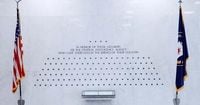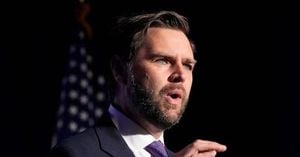In a move that has sent shockwaves through the intelligence community and Washington’s foreign policy circles, U.S. Director of National Intelligence Tulsi Gabbard has taken a series of unprecedented actions, including halting intelligence sharing on Russia-Ukraine peace talks with key allies and revoking the security clearances of dozens of senior intelligence officials. The decisions, made in July and August 2025, have been widely reported by CBS News and The Economist, and are already raising questions about the future of U.S. intelligence cooperation and the integrity of the nation’s security apparatus.
On July 20, Gabbard signed a directive that ordered the U.S. intelligence community to stop sharing information related to ongoing Russia-Ukraine peace talks with the so-called Five Eyes alliance—comprised of the U.S., Canada, the U.K., Australia, and New Zealand. According to CBS News, the directive limited the distribution of intelligence to information that had already been publicly released and required that intelligence on peace talks be compartmentalized within the agencies where it originated. Notably, the order did not prohibit sharing information obtained through diplomatic means, nor did it affect intelligence sharing on U.S. military planning or aid to Ukraine.
No official rationale was provided for this sudden clampdown on intelligence sharing. The White House declined to comment when approached by CBS News, leaving allies and analysts alike to speculate about the motivations behind the move. The decision comes as peace talks between Russia and Ukraine—brokered by the United States—continue, with President Donald Trump making renewed efforts to bring Ukrainian President Volodymyr Zelensky and Russian President Vladimir Putin to the negotiating table. Recent high-profile meetings in Anchorage, Alaska, and at the White House have underscored the urgency of these diplomatic efforts.
Meanwhile, Western allies, including members of the so-called Coalition of the Willing, have been pushing for robust security guarantees for Kyiv, backed by U.S. support. Curiously, while all Five Eyes nations except Washington are part of this 31-nation coalition, the U.S. decision to limit intelligence sharing has left some partners bewildered. As one senior European official reportedly confided to The Economist, “I’ve literally had [allied] Five Eyes partners say: what’s going on?”
This is not the first time the Trump administration has abruptly altered intelligence-sharing protocols. On March 5, 2025, the U.S. briefly halted intelligence sharing with Ukraine following a heated exchange between Trump and Zelensky on February 28. The move was quickly reversed, but it foreshadowed the current climate of uncertainty and suspicion within the intelligence community.
At the same time, Gabbard’s actions have extended far beyond the realm of foreign intelligence. On August 19, she revoked the security clearance of a senior CIA analyst who had prepared the landmark 2016 report on Russian interference in the U.S. elections—along with 36 other current and former officials. According to The Economist, the analyst, a veteran with over two decades of service and extensive expertise in Russia and Eurasia, became one of the highest-ranking career intelligence officers dismissed under Trump’s presidency. Others swept up in the purge included Shelby Pierson and Vinh Nguyen, both of whom played key roles in the 2016 investigation.
The rationale for these revocations, as stated by Gabbard, was alleged betrayal of the Constitutional oath. Yet, as The Economist points out, the Trump administration has a history of wielding control over security clearances as a political tool against critics and perceived opponents. The move has alarmed many current and former intelligence officials, who see it as a dangerous escalation in the administration’s campaign to discredit dissenting voices within the national security establishment.
Former CIA officer Larry Pfeiffer, who also lost his clearance earlier this year, told The Economist, “Even the cleaning crews have clearance. Many officers also rely on security clearances after retirement to seek consulting positions. The CIA officer was thought to be close to retirement age.” Another source added, “Who will want to work on some controversial issue or go out on a limb analytically?” The chilling effect on morale, they say, is palpable. “It is hard to overstate the impact on morale. Everyone is so afraid and looking over their shoulder, asking am I next?” a former colleague remarked.
The recent wave of dismissals is just the latest in a series of confrontations between the Trump administration and the intelligence community. In April, Gabbard reportedly pressured analysts to revise assessments of the Venezuelan criminal organization Tren de Aragua to align with White House policy. In June, President Trump publicly criticized intelligence leaks from the Defense Intelligence Agency that contradicted his claims about the destruction of Iranian nuclear facilities. According to The Economist, while past presidents have clashed with intelligence agencies—during the Vietnam and Iraq wars, for instance—the current level of retaliation is unprecedented.
Adding to the turmoil, in July 2025, Gabbard declassified a House Intelligence Committee assessment on the 2016 Russia report, despite objections from the CIA. The document, co-authored by current FBI Director Kash Patel, included sensitive details such as verbatim quotes from intercepts and descriptions of sources in Russia. In the same vein, CIA Director John Ratcliffe released an internal assessment of the analytic craft behind the 2016 Russia report, which, while highlighting some strengths, criticized the report for being prepared too quickly and with too much involvement from agency leadership.
On August 20, Gabbard announced plans to cut the Office of the Director of National Intelligence (ODNI) staff by 50%. The ODNI, created after the September 11 attacks to ensure effective intelligence sharing, coordinates the work of 18 U.S. intelligence agencies. Gabbard framed the cuts as a way to reduce bureaucracy and purge “deep state agents”—a term used to describe officials who allegedly act covertly to sabotage the elected leadership’s policies. Even some critics of Trump concede that the ODNI had grown unwieldy and struggled to assert authority over its subordinate agencies, but the scale and timing of the cuts have raised eyebrows across the political spectrum.
The Trump administration’s campaign has not stopped at personnel changes. In July, CIA Director John Ratcliffe submitted a criminal referral to the FBI regarding former CIA Director John Brennan for allegedly providing false testimony to Congress. The Department of Justice has also opened a criminal investigation into former FBI Director James Comey, who was at the helm during the 2016 Russia report’s preparation. Comey had already been under scrutiny for a social media post in May, which the administration interpreted as a death threat.
These sweeping measures have prompted strong reactions from leaders within and outside the intelligence community. On August 20, CIA Director Bill Burns, who served under President Joe Biden, published an open letter in The Atlantic addressed to officials who had lost their security clearances. “If intelligence analysts at the CIA saw our rivals engage in this kind of great-power suicide, we would break out the bourbon. Instead, the sound we hear is of champagne glasses clinking in the Kremlin and Zhongnanhai,” he wrote, underscoring the sense of alarm about the direction of U.S. intelligence policy.
Amid these internal upheavals, the Trump administration has also announced plans to reduce Pentagon spending by $40 billion, leading to the elimination of 100 positions and the reassignment of some personnel to field units. These cuts, coupled with the intelligence shake-ups, come at a time when both China and Russia are believed to be preparing for a new wave of espionage activity, leaving some to wonder whether the U.S. is undermining its own security infrastructure at a critical moment.
As the dust settles, one thing is clear: the relationship between the White House and the intelligence community has entered uncharted territory, with profound implications for America’s allies, adversaries, and the future of global security cooperation.





